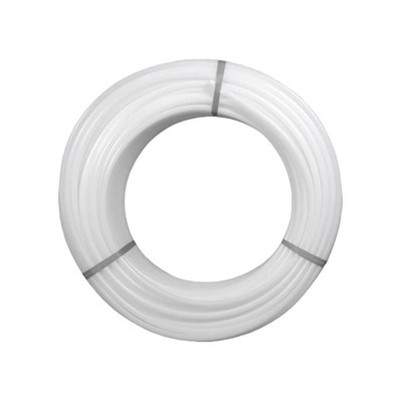What is the effect of temperature fluctuations on PE - Xa/EVOH Pipe?
Leave a message
Yo, fellow pipe enthusiasts! I'm a supplier of PE-Xa/EVOH Pipe, and today I wanna chat about how temperature fluctuations can mess with these pipes.
Let's start with the basics. PE-Xa/EVOH pipes are pretty awesome. They're made of cross-linked polyethylene (PE-Xa) and ethylene-vinyl alcohol (EVOH). The PE-Xa gives the pipe strength and flexibility, while the EVOH acts as a barrier to oxygen. This combination makes these pipes great for all sorts of applications, like radiant floor heating, hot and cold water distribution, and even in some industrial settings.
But here's the deal - temperature is a big factor that can affect how these pipes perform. When the temperature changes, it can cause a bunch of different things to happen to the pipe.
Expansion and Contraction
One of the most obvious effects of temperature fluctuations is expansion and contraction. You see, when the temperature goes up, the molecules in the pipe start to move around more. This causes the pipe to expand. And when the temperature drops, the molecules slow down, and the pipe contracts.
This expansion and contraction might not seem like a big deal at first, but over time, it can cause some problems. For example, if the pipe is installed in a tight space and it expands too much, it can put a lot of stress on the fittings. This can lead to leaks or even cause the fittings to break.
On the other hand, if the pipe contracts too much, it can create gaps between the pipe and the fittings. This can also lead to leaks, as well as allow oxygen to seep into the system. And we know that oxygen can cause corrosion in the pipes and other components of the system.
Changes in Material Properties
Temperature fluctuations can also change the material properties of the PE-Xa/EVOH pipe. At higher temperatures, the pipe becomes more flexible. This might sound like a good thing, but it can actually be a problem. If the pipe is too flexible, it might not be able to support its own weight or the weight of the fluid inside it. This can cause the pipe to sag or even collapse in extreme cases.
At lower temperatures, the pipe becomes more brittle. This means that it's more likely to crack or break if it's subjected to any kind of stress. For example, if there's a sudden impact or if the pipe is bent too much, it might crack. And once a crack forms, it can quickly spread, leading to a major leak.
Impact on Barrier Properties
As I mentioned earlier, the EVOH layer in the PE-Xa/EVOH pipe acts as a barrier to oxygen. But temperature can affect how well this barrier works. At higher temperatures, the EVOH layer becomes less effective at blocking oxygen. This means that more oxygen can get into the system, which can cause corrosion and other problems.
On the other hand, at lower temperatures, the EVOH layer becomes more rigid. This can cause it to crack or delaminate from the PE-Xa layer. And once the EVOH layer is damaged, it won't be able to block oxygen as effectively.
How to Mitigate the Effects
So, what can we do to minimize the effects of temperature fluctuations on PE-Xa/EVOH pipes? Well, one of the most important things is to make sure that the pipes are installed correctly. This means leaving enough room for expansion and contraction. There should be some slack in the pipe runs, and the fittings should be able to accommodate the movement of the pipe.
Another thing is to use proper insulation. Insulating the pipes can help to keep the temperature more stable. This reduces the amount of expansion and contraction that the pipes experience. It also helps to protect the EVOH layer from extreme temperatures, which can improve its barrier properties.


Regular maintenance is also crucial. We should check the pipes and fittings regularly for any signs of damage or wear. If we notice any leaks, cracks, or other problems, we should fix them right away. This can prevent small problems from turning into big ones.
Real-World Examples
I've seen firsthand how temperature fluctuations can affect PE-Xa/EVOH pipes. One time, we installed a radiant floor heating system in a building in a cold climate. During the winter, the temperature dropped significantly, and the pipes contracted. Unfortunately, the installation didn't allow for enough contraction, and some of the fittings started to leak.
We had to go back and make some adjustments to the installation. We added some expansion loops to give the pipes more room to move. And we also improved the insulation to keep the temperature more stable. After that, the system worked much better, and we didn't have any more problems with leaks.
In another case, we supplied pipes for a hot water distribution system in a factory. The factory had some areas where the temperature could get quite high. Over time, the pipes became more flexible, and some of them started to sag. We had to reinforce the supports to prevent the pipes from collapsing.
Conclusion
In conclusion, temperature fluctuations can have a significant impact on PE-Xa/EVOH pipes. They can cause expansion and contraction, change the material properties, and affect the barrier properties of the pipes. But by installing the pipes correctly, using proper insulation, and performing regular maintenance, we can minimize these effects.
If you're in the market for PE-Xa/EVOH pipes, or if you have any questions about how temperature might affect your specific application, don't hesitate to reach out. I'm here to help you make the best decision for your project. Let's work together to ensure that your piping system performs at its best, no matter what the temperature is doing.
References
- "Plastic Pipes Handbook" by Berndt A. Müller
- "Handbook of Polymer Science and Technology" edited by Herman F. Mark




